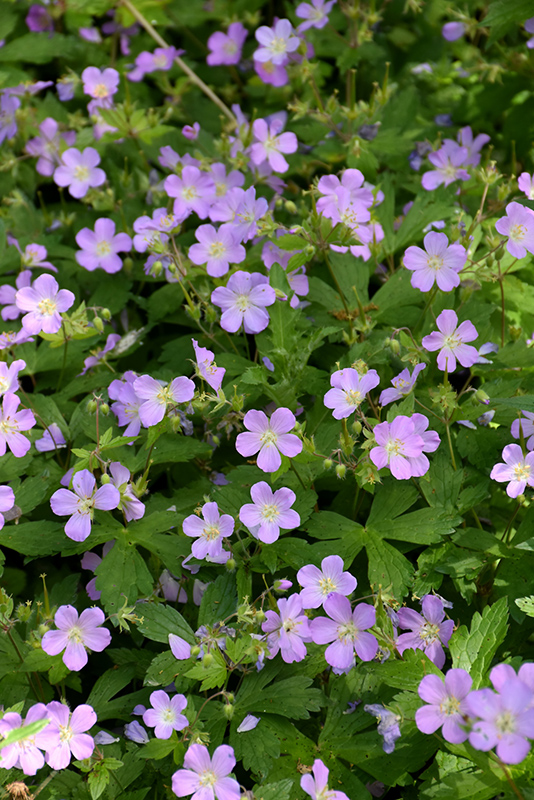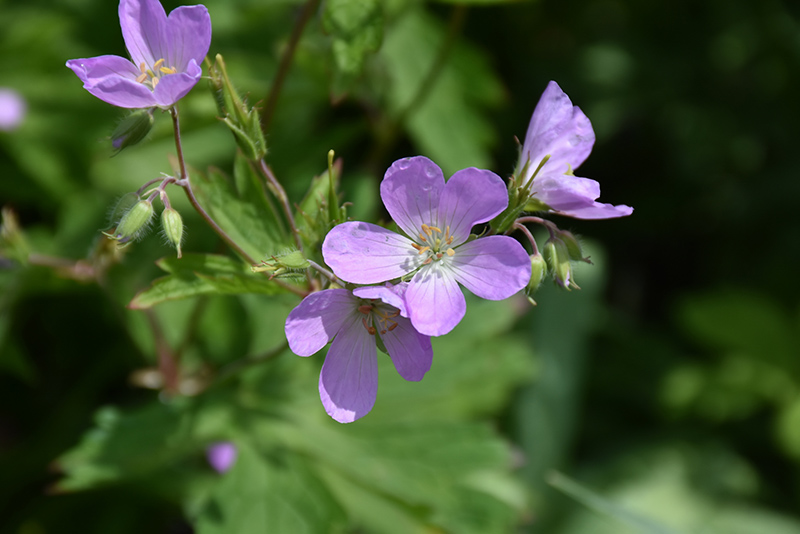Plant Finder
Height: 24 inches Spacing: 20 inches
Sunlight:
Hardiness Zone: 4a Other Names: Wild Cranesbill Description: A compact mounded variety that features pale pink flowers rising above shiny green foliage during the early summer months; foliage develops a beautiful red hue in the fall; great for borders, beds and cottage gardens; drought tolerant once established Ornamental Features Spotted Cranesbill has masses of beautiful pink flowers at the ends of the stems from late spring to mid summer, which are most effective when planted in groupings. Its deeply cut lobed palmate leaves are emerald green in color. The foliage often turns brick red in fall. Landscape Attributes Spotted Cranesbill is an herbaceous perennial with a mounded form. Its relatively fine texture sets it apart from other garden plants with less refined foliage. This plant will require occasional maintenance and upkeep, and should only be pruned after flowering to avoid removing any of the current season's flowers. Deer don't particularly care for this plant and will usually leave it alone in favor of tastier treats. Gardeners should be aware of the following characteristic(s) that may warrant special consideration; Spotted Cranesbill is recommended for the following landscape applications; Planting & Growing Spotted Cranesbill will grow to be about 24 inches tall at maturity, with a spread of 24 inches. When grown in masses or used as a bedding plant, individual plants should be spaced approximately 20 inches apart. Its foliage tends to remain dense right to the ground, not requiring facer plants in front. It grows at a medium rate, and under ideal conditions can be expected to live for approximately 10 years. As an herbaceous perennial, this plant will usually die back to the crown each winter, and will regrow from the base each spring. Be careful not to disturb the crown in late winter when it may not be readily seen! This plant does best in full sun to partial shade. It prefers to grow in average to moist conditions, and shouldn't be allowed to dry out. It is not particular as to soil type or pH. It is somewhat tolerant of urban pollution. This species is native to parts of North America. It can be propagated by division. Spotted Cranesbill is a fine choice for the garden, but it is also a good selection for planting in outdoor pots and containers. It can be used either as 'filler' or as a 'thriller' in the 'spiller-thriller-filler' container combination, depending on the height and form of the other plants used in the container planting. It is even sizeable enough that it can be grown alone in a suitable container. Note that when growing plants in outdoor containers and baskets, they may require more frequent waterings than they would in the yard or garden.![]()
![]()
![]()
![]()
![]()
![]()
![]()
![]()
![]()
![]()
![]()
![]()
.png)


